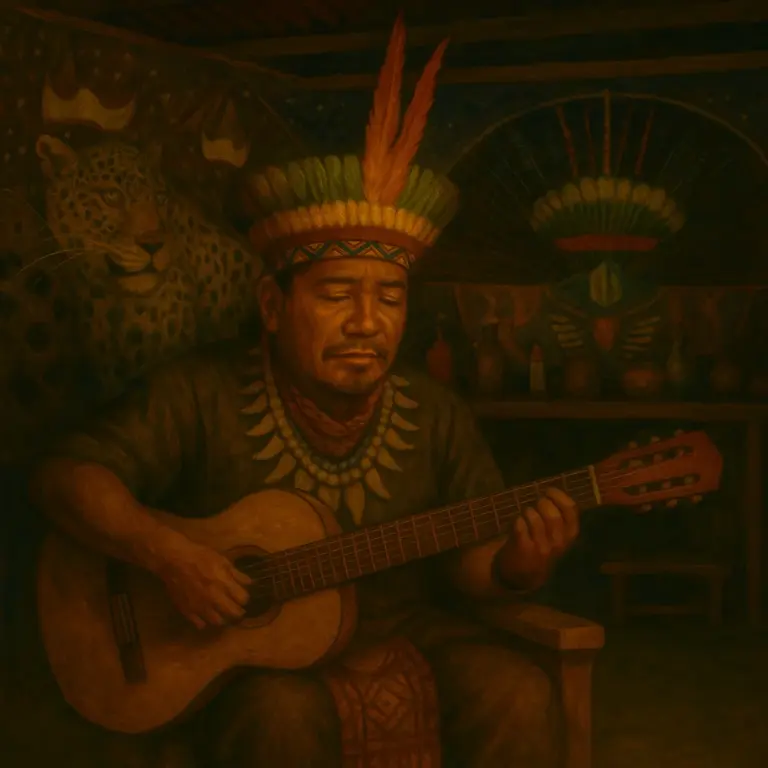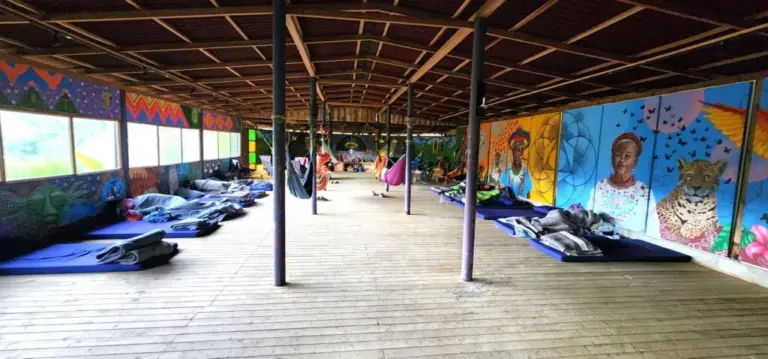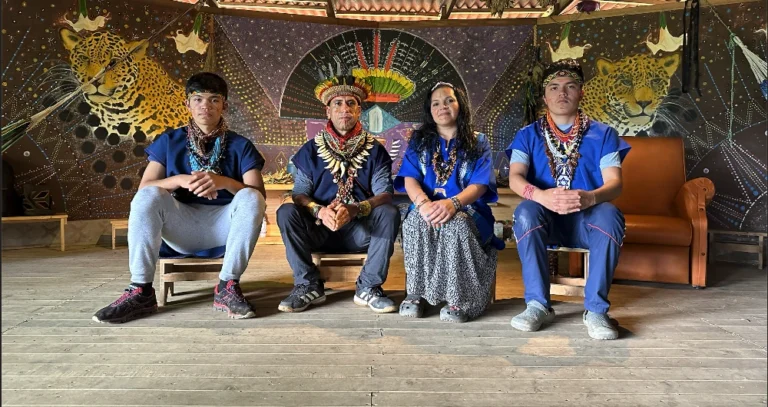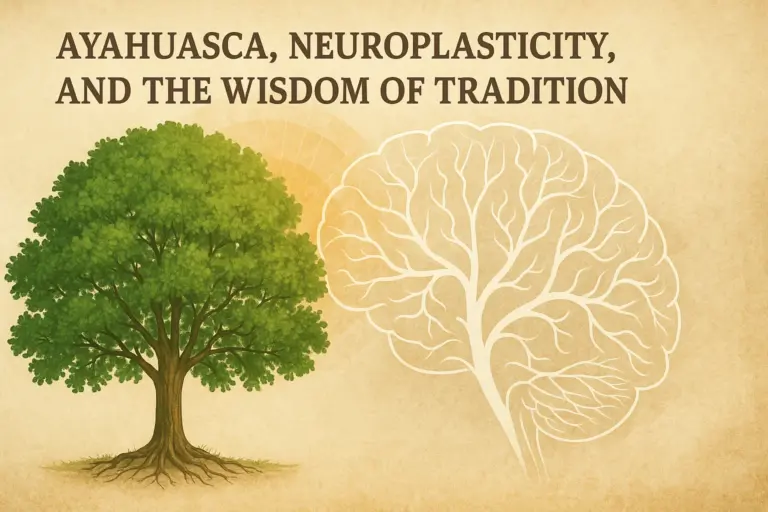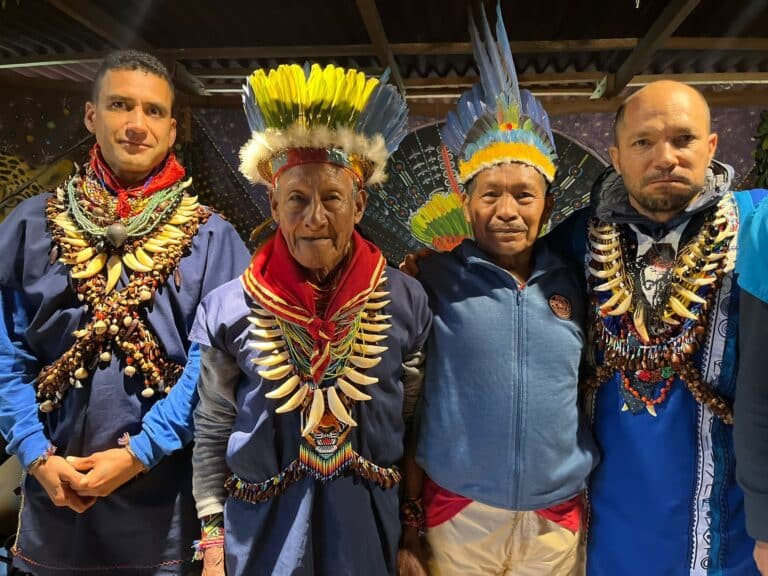The Changing Landscape of Sacred Plant Medicine: Science, Policy, and Cultural Revival
Ayahuasca: From the Rainforest to the Lab
In 2025, research into ayahuasca’s therapeutic potential reached a new level of sophistication. A longitudinal study in PLOS Mental Health confirmed what traditional healers have always taught: context determines healing. Participants’ mental-health outcomes depended heavily on prior psychological history and on the ceremonial framework that surrounded the brew.
In a world chasing quick fixes, the message is clear — the medicine works through us, not for us.
Meanwhile, a pilot project at the National University of Natural Medicine in Oregon is mapping how ayahuasca affects neural inflammation, epigenetic markers, and the gut microbiome. The results hint that the brew’s influence may extend far beyond mood regulation — potentially reshaping pathways related to immune balance and trauma recovery.
Across the Atlantic, neuroscientists at Imperial College are exploring the “waking-dream” brain state induced by DMT, showing that ayahuasca temporarily loosens rigid brain networks, increasing neuroplasticity and emotional flexibility.
For seekers and facilitators alike, the implication is profound: healing happens when the brain — and the person — learn to move again. Learn more about our authentic ayahuasca retreats in Colombia and how integration shapes transformation.
“The respect that Samuel and this community have for the medicine is unmistakeable… real shamans, real knowledge, with real care.” – review excerpt, Camino al Sol community
Mambe and the Coca Leaf: A Political and Spiritual Reckoning
The coca leaf — the foundation of mambe — stands at the center of a global legal and cultural re-evaluation. The World Health Organization’s 2025 review may finally correct a century-old mistake by separating the natural leaf from the synthetic drug cocaine.
Colombia, Peru, and Bolivia are leading a diplomatic effort urging the United Nations to deschedule the leaf, arguing that criminalizing coca is a colonial remnant that punishes culture, not crime.
For Indigenous communities, this is more than policy. It’s a chance to reclaim a sacred plant that has sustained ceremony, nutrition, and social connection for millennia. In urban Colombia, mambe circles are returning — spaces where word medicine replaces argument, and dialogue replaces noise. Explore our detailed guide on mambe and ambil to understand their place in Amazonian cosmology.
For Camino al Sol’s audience, this shift is both symbolic and practical: global attention to coca’s legitimacy opens new doors for respectful education around mambe’s role in balance and reflection.
It’s a reminder that not every stimulant is a sin; some are sacred. Read more about our mission and philosophy.
Ambil: The Grounding Medicine We Forgot
If mambe is word, ambil is ground. Yet while research on ayahuasca and coca multiplies, scientific literature on ambil — the Amazonian tobacco paste — remains almost absent.
Recent ethnographic work among the Uitoto and Kogui peoples describes ambil as the “dark mirror” of dialogue: it grounds speech, anchors emotion, and reminds the body of presence. Chemical studies of Nicotiana rustica show high concentrations of alkaloids that, in ritual doses, create deep calm rather than stimulation. Learn how ambil complements yagé in our healing journey reflections.
In an era of distraction, ambil’s quiet medicine may be exactly what the world forgot to ask for. Discover its deeper meaning in our Mambe & Ambil article.
Global Context: Policy, Ethics, and Integration
Latin America is positioning itself as a hub for ethical psychedelic research, with new clinical-trial networks forming in Colombia and Brazil. Yet alongside scientific enthusiasm, Indigenous leaders warn of “spiritual extraction” — the risk of turning ancestral medicine into another commodity.
From ayahuasca tourism scandals in Europe to the first international Ayahuasca Forum planned for 2026, the debate is shifting from legality to legitimacy: who gets to carry the medicine forward, and under whose values?
Science is finally catching up to what the forest has whispered all along: healing is not a transaction — it’s a relationship.
Whether through the neural pathways of ayahuasca, the ancestral dialogues of mambe, or the quiet presence of ambil, every path leads back to the same lesson:
nothing changes except the way we perceive and assume life.
For Camino al Sol, this reinforces the path already chosen — integrity over expansion, depth over hype. The elders often say: “The real ceremony is life itself.” To learn more about our lineage and work, visit About Camino al Sol or join our next ayahuasca retreat in Colombia.


